#Egypt’s Ministry of Tourism & Archaeology
Text
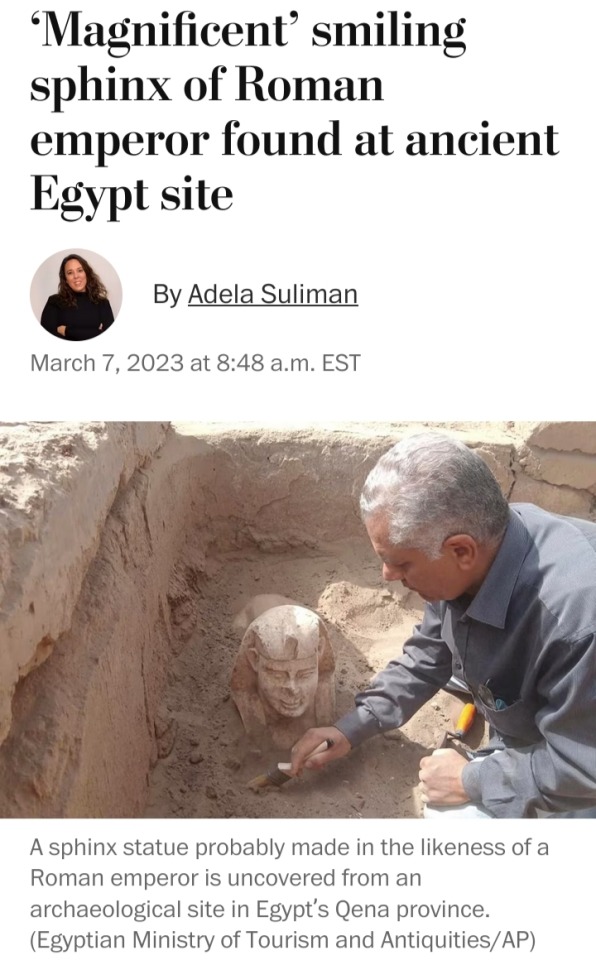
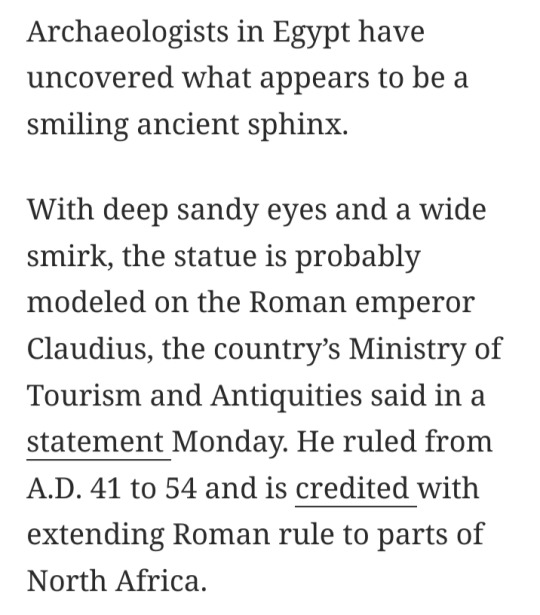




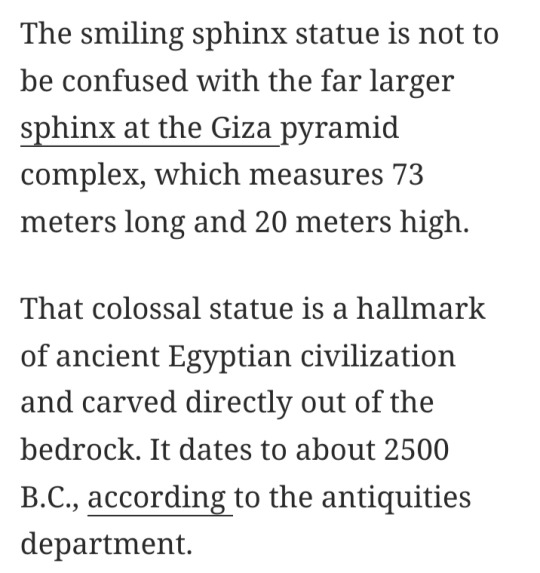


#sphinx statue#Egypt#Ministry of Tourism and Antiquities#Temple of Dendera#Emperor Claudius#Ancient Egyptian Civilization#Ancient Egypt#archaeology
72 notes
·
View notes
Text
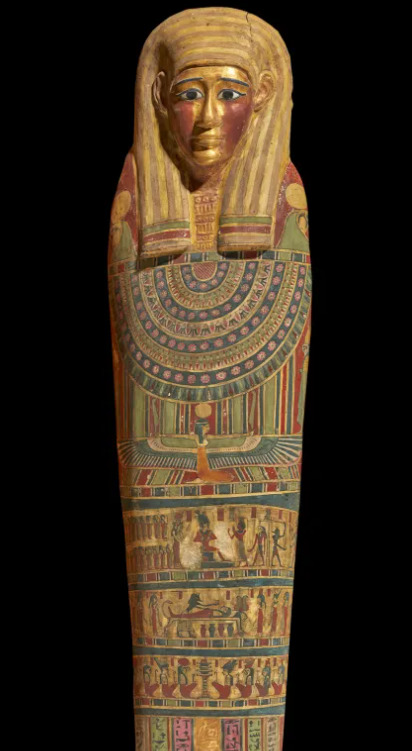
This is really fascinating!! It's amazing what modern technology can tell us about the past!!
#Amulets#Cairo#Egypt#Egyptian Museum#Frontiers in Medicine#Golden Boy Mummy#golden mummy#history#archaeology#ancient history#egypt#egyptian history#arts and culture#mummies#techology#Egypt Independent#mummification#scientific study#Egyptian Ministry of Tourism#Ptolemaic era#CT scan technology#egyptian archaeology#digital scan
2 notes
·
View notes
Text
Archaeologists Excavating the Tomb of Egypt’s First Female Pharaoh Found Hundreds of Jars Still Holding Remnants of Wine
The dig has also shed new light on the reign of the ancient queen.
— Adam Schrader | October 18, 2023
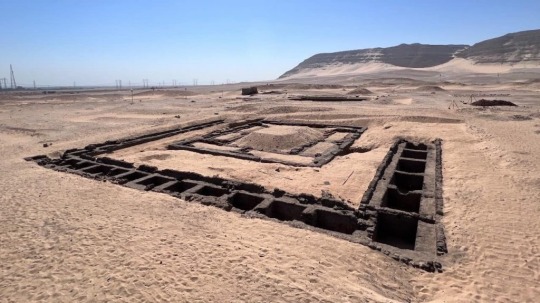
An archaeology team has discovered evidence that the Ancient Egyptian Queen Merneith “had a great position” and was responsible for the central government offices. Photo courtesy of Egypt’s Ministry of Tourism and Archaeology
Archaeologists digging in one of the oldest cities in Egypt have discovered evidence that sheds new light on the life of the ancient Egyptian queen Merneith, who ruled during the 1st Dynasty.
The excavation of a tomb in the Umm al-Qaab area in Abydos found an inscription on a “Stone Vessel” that provides new historical information about Merneith’s reign, during which she held “A Great Position” and was responsible for the central government offices, said Christiana Köhler, who led the dig.
“It has been speculated that Merneith may have been the first female Pharaoh in Ancient Egypt,” Köhler said in a news release, “but her true identity remains a mystery,”

A fragment of a stone vessel recently found in the tomb of Queen Merneith. It has an incised inscription with her name on the right and the mention of the royal treasury on the left. Photo courtesy of EC Köhler, M Minotti.
Köhler specified that Merneith, also known as Meret-Neith, may have been in charge of the treasury among other government offices, supporting the idea of her historical significance. She is the only 1st-Dynasty woman whose tomb has been uncovered in Abydos so far.
“Considering that these are the remains of people’s lives and actions from 5,000 years ago, we are stunned every day at the amazing detail we encounter during our investigations, including the perfectly preserved grape seeds, craftwork and even footprints in the mud,” Köhler said over email.
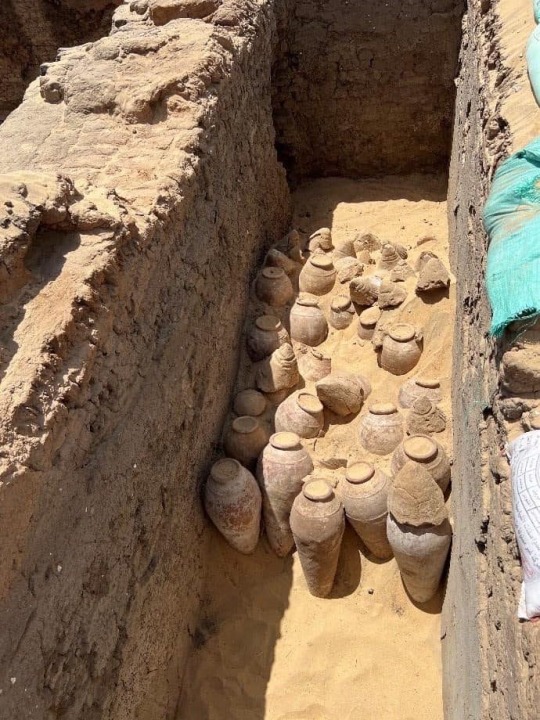
The Wine Jars are seen during the excavation of Merneith’s Tomb. Photo courtesy of Egypt’s Ministry of Tourism and Archaeology
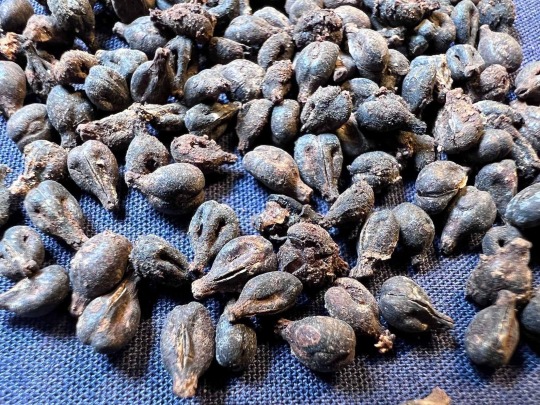
Perfectly Preserved Grape 🍇 Seeds: Egypt’s Tourism Ministry highlighted hundreds of 5,000-year-old wine jars found in the tomb in the Umm al-Qaab area in Abydos, one of the oldest cities in Egypt located about 354 miles south of Cairo. Photo courtesy of Egypt’s Ministry of Tourism and Archaeology
Discoveries made in the dig also “challenge the long-held belief in human sacrifice,” Köhler added in the news release.
Next to Merneith’s burial site, archaeologists found a group of 41 tombs for her courtiers and servants, indicating these chambers were built during different periods of time.
“This observation, together with other evidence, radically challenges the oft-proposed, but unproven idea of ritual human sacrifice in the 1st Dynasty,” Köhler said.
The news release highlighted the discovery of hundreds of 5,000-year-old wine jars that had never been opened. The archaeological team—hailing from Egypt, Germany and Austria—found the remains of wine inside.
Mustafa Waziri, Secretary General of Egypt’s Supreme Council of Antiquities, said in a statement that the discovered jars are large in size and “in a good condition of preservation.”
“Some of them are very well preserved with their jar stoppers still intact,” Köhler said.
#Archaeology#Ancient Egyptian QueenMerneith#Egypt 🇪🇬#Egypt’s First Female Pharaoh#Archaeologists | Jars 🫙 | Wine 🍷#Tomb | Umm al-Qaab area | Abydos#1st Dynasty#Egypt’s Ministry of Tourism & Archaeology#Stone Vessel#Christiana Köhler#Preserved Grape 🍇 Seeds | Craftwork | Footprints 👣#Mustafa Waziri | Secretary General | Egypt’s Supreme Council of Antiquities
0 notes
Text
Archeaology gives us the name of another woman in History
Archaeologists digging in one of the oldest cities in Egypt have discovered evidence that sheds new light on the life of the ancient Egyptian queen Merneith, who ruled during the 1st Dynasty.
The excavation of a tomb in the Umm al-Qaab area in Abydos found an inscription on a “stone vessel” that provides new historical information about Merneith’s reign, during which she held “a great position” and was responsible for the central government offices, said Christiana Köhler, who led the dig.
“It has been speculated that Merneith may have been the first female Pharaoh in Ancient Egypt,” Köhler said in a news release, “but her true identity remains a mystery,”
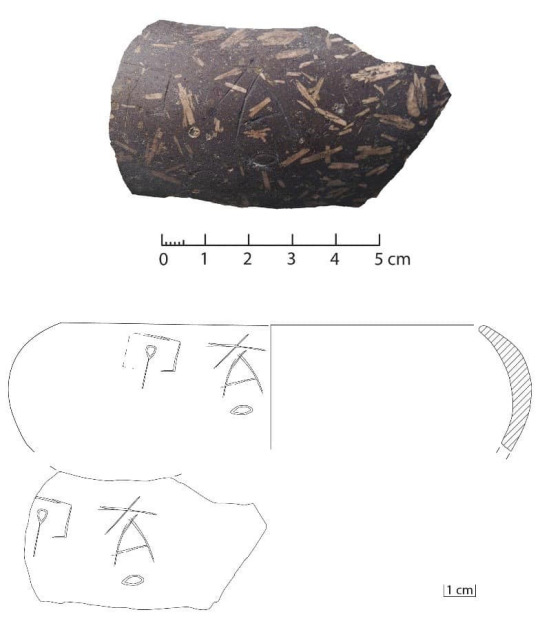
A fragment of a stone vessel recently found in the tomb of Queen Merneith. It has an incised inscription with her name on the right and the mention of the royal treasury on the left. Photo courtesy of EC Köhler, M Minotti.
Köhler specified that Merneith, also known as Meret-Neith, may have been in charge of the treasury among other government offices, supporting the idea of her historical significance. She is the only 1st-Dynasty woman whose tomb has been uncovered in Abydos so far.
“Considering that these are the remains of people’s lives and actions from 5,000 years ago, we are stunned every day at the amazing detail we encounter during our investigations, including the perfectly preserved grape seeds, craftwork and even footprints in the mud,” Köhler said over email.
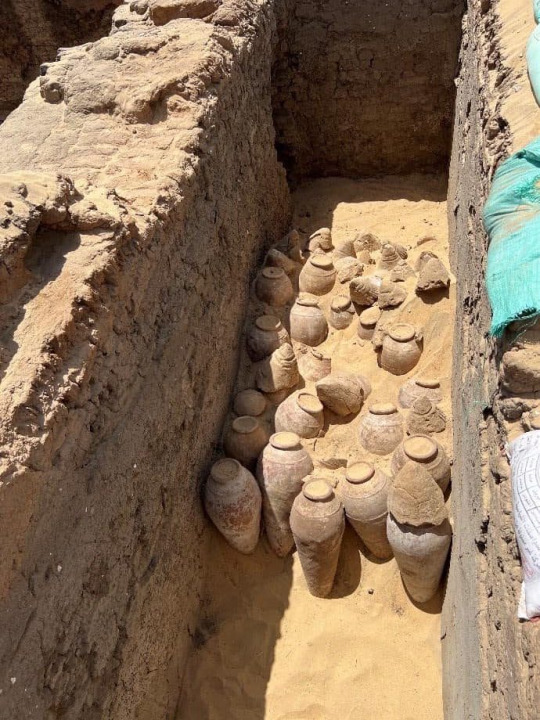
The wine jars are seen during the excavation of Merneith’s tomb. Photo courtesy of Egypt’s Ministry of Tourism and Archaeology

Egypt’s Tourism Ministry highlighted hundreds of 5,000-year-old wine jars found in the tomb in the Umm al-Qaab area in Abydos, one of the oldest cities in Egypt located about 354 miles south of Cairo. Photo courtesy of Egypt’s Ministry of Tourism and Archaeology
Discoveries made in the dig also “challenge the long-held belief in human sacrifice,” Köhler added in the news release.
Next to Merneith’s burial site, archaeologists found a group of 41 tombs for her courtiers and servants, indicating these chambers were built during different periods of time.
“This observation, together with other evidence, radically challenges the oft-proposed, but unproven idea of ritual human sacrifice in the 1st Dynasty,” Köhler said.
The news release highlighted the discovery of hundreds of 5,000-year-old wine jars that had never been opened. The archaeological team—hailing from Egypt, Germany and Austria—found the remains of wine inside.
Mustafa Waziri, Secretary General of Egypt’s Supreme Council of Antiquities, said in a statement that the discovered jars are large in size and “in a good condition of preservation.”
“Some of them are very well preserved with their jar stoppers still intact,” Köhler said.
#women in history#Discoveries in Archaeology#Egypt#Ancient Egypt#queen Merneith#1st Dynasty#Abydos#Queen Meret-Neith#5000 years ago#Umm al-Qaab
279 notes
·
View notes
Text
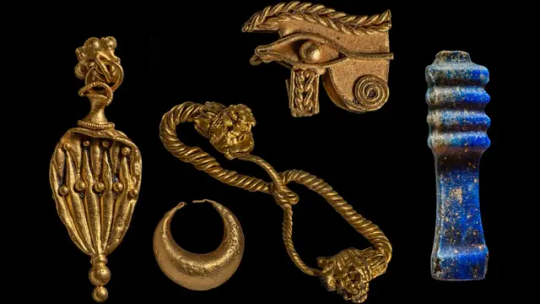
Sunken Temples of Aphrodite and Amun Found off Egyptian Coast
New discoveries off Egyptian coast reveal ‘treasures and secrets
New “treasures and secrets” have been revealed at the site of a sunken temple off Egypt’s Mediterranean coast, the European Institute for Underwater Archaeology (IEASM) announced in a news release Tuesday.
An underwater archaeological team, led by French marine archaeologist Franck Goddio, has made further discoveries at the site of a temple to god Amun in the ancient port city of Thonis-Heracleion in the Bay of Aboukir, the institute said.
The team investigated the city’s south canal, where huge blocks of stone from the ancient temple collapsed “during a cataclysmic event dated to the mid-second century BC,” the institute said.
The temple to god Amun was where pharaohs came “to receive the titles of their power as universal kings from the supreme god of the ancient Egyptian pantheon,” it said.
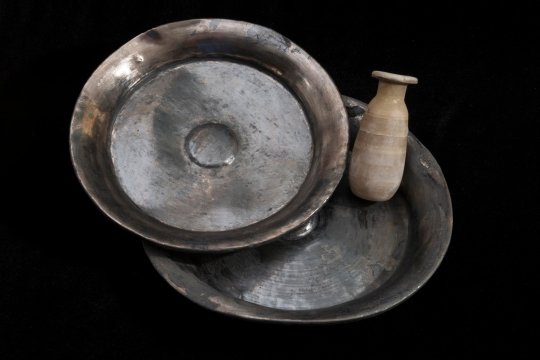
“Precious objects belonging to the temple treasury have been unearthed, such as silver ritual instruments, gold jewelry and fragile alabaster containers for perfumes or unguents,” IEASM said. “They bear witness to the wealth of this sanctuary and the piety of the former inhabitants of the port city.”
The archaeological excavations, conducted jointly by Goddio’s team and the Department of Underwater Archaeology of the Ministry of Tourism and Antiquities of Egypt, revealed underground structures “supported by very well-preserved wooden posts and beams dating from the 5th century BC,” the institute said.
“It is extremely moving to discover such delicate objects, which survived intact despite the violence and magnitude of the cataclysm,” said Goddio, who is president of IEASM and director of excavations.
The discoveries were made possible thanks to the development and use of new geophysical prospecting technologies that can detect cavities and objects “buried under layers of clay several meters thick,” the institute said.

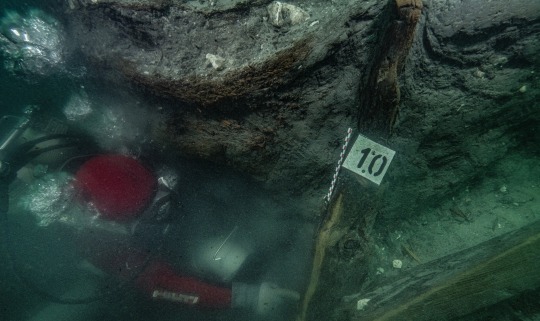
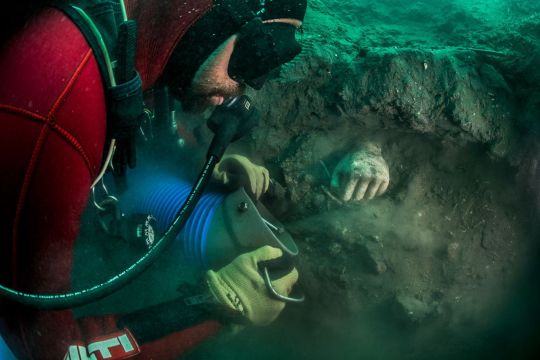
Relics from Greek presence, too
East of the Amun temple, a Greek sanctuary devoted to Aphrodite was discovered containing bronze and ceramic objects.
“This illustrates that Greeks who were allowed to trade and settle in the city during the time of the Pharaohs of the Saïte dynasty (664 - 525 BC) had their sanctuaries to their own gods,” the institute said.
The discoveries of Greek weapons also reveal the presence of Greek mercenaries in the area, IEASM said. “They were defending the access to the Kingdom at the mouth of the Canopic Branch of the Nile. This branch was the largest and the best navigable one in antiquity.”
The remains of Thonis-Heracleion are now located under the sea, 7 kilometers (4.3 miles) from the present coast of Egypt, IEASM said. The city was for centuries Egypt’s largest port on the Mediterranean before the founding of Alexandria by Alexander the Great in 331 BC.
“Rising sea levels and earthquakes followed by tidal waves triggering land liquefaction events, caused a 110 square kilometer portion of the Nile delta to totally disappear under the sea, taking with it the city of Thonis-Heracleion,” the institute said.
The city was discovered by the IEASM in 2000.
By Radina Gigova.
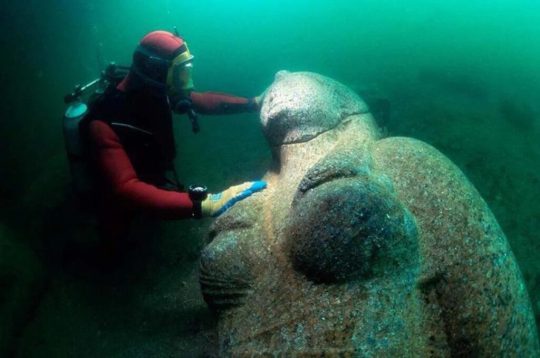
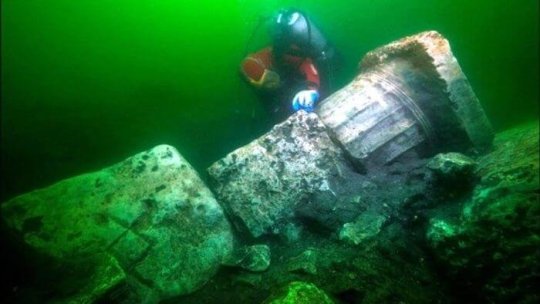
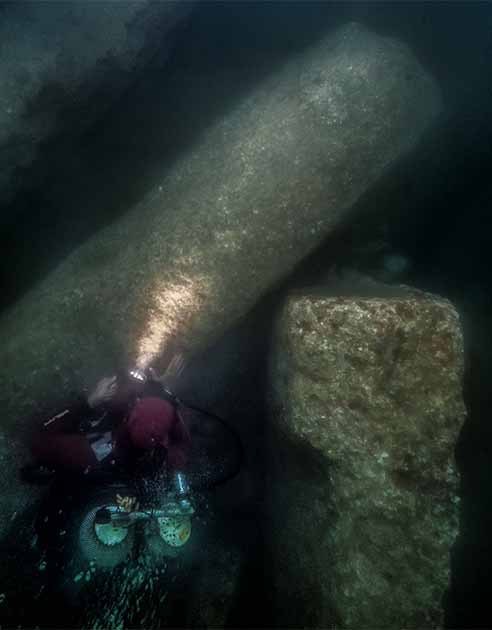
#Sunken Temples of Aphrodite and Amun Found off Egyptian Coast#Thonis-Heracleion#Bay of Aboukir#gold#gold treasure#ancient artifacts#archeology#archeolgst#history#history news#ancient history#ancient culture#ancient civilizations#ancient egypt#egyptian history#egyptian mythology#greek history
289 notes
·
View notes
Text
Royal tomb discovered near Luxor dates to time when female pharaoh co-ruled ancient Egypt

Archaeologists in Egypt have discovered a 3,500-year-old royal tomb near Luxor. The tomb was likely constructed at a time when Hatshepsut, a female pharaoh, co-ruled ancient Egypt.
"Partial inscriptions and ceramic evidence suggest this was constructed during the joint-reign of Thutmose III and Hatshepsut," archaeologists said in a statement.
The tomb was excavated by a team of archaeologists from the Ministry of Tourism and Antiquities and the New Kingdom Research Foundation mission, which is affiliated with the MacDonald Institute for Archaeological Research at the University of Cambridge. The team found the tomb in October 2022 while exploring an area near Luxor called the Wadi Gabbanat el-Qurud, which is located near the Valley of the Kings. Read more.
442 notes
·
View notes
Text
Saqqara Archaeological Mission: Exploring Egypt's Rich History and Enhancing the Tourism Experience.
Egypt has the biggest treasure in the world. you can have a perfect vacation with @cairo-top-tours
17 notes
·
View notes
Photo

Rare Find: 5,000-Year-Old Wine Jars Discovered by Archaeologists in Egypt | Wine Spectator
What were people drinking 5,000 years ago in the southern Egyptian city of Abydos? We already knew locals were filling their cups with beer, as Abydos was home to a massive brewery at that time. But as we’ve recently learned, it seems there was another tipple on the beverage list.
On Oct. 1, an international archaeology team announced the extremely rare discovery of dozens of wine jars at the Um Al-Qaab archaeological site within Abydos, giving us an even clearer image of Bronze Age hospitality. (The excavation represents the combined efforts of the Egyptian Ministry of Tourism and Antiquities, the Archaeological Institute in Cairo, the University of Vienna, the University of Technology in Vienna and Lund University.)
Archaeologists discovered the jars while digging at the tomb of Queen Merneith (aka Merit-neith), the royal consort of the pharaoh Djet in the First Dynasty. Merneith later ruled Egypt as a regent during the reign of her young son, Den, around the year 2950 B.C.E., making her one of the earliest-known women rulers in recorded history. While historians debate the full extent of Queen Merneith’s authority, researchers found inscriptions at Abydos that indicate she did, indeed, pull the levers of government. Now, about that wine …
“We found about 50 intact wine jars in one context and the fragments of hundreds of others,” Dr. E. Christiana Köhler, the excavation’s principal investigator and project director, told Wine Spectator via email. “Some of them were still sealed with ceramic lids and mud sealings. The excavations are ongoing, and it is possible that we’ll find more wine jars.”
If that wasn’t exciting enough, most of the jars still hold quantities of “well-preserved” grape pips and other residue. Per Köhler, while this wine probably came from vineyards within Egypt, chemical analysis is ongoing, so time may tell what type of wine this is. (It’s already been 5,000 years; what’s a few more?) ...
My BFF Sue hipped me
#Ancient Egypt#Merneith#Archaic Egypt#Early Dynastic Egypt#First Dynasty#1st Dynasty#Wine#Archaeology#Ancient Oenology#too cool
3 notes
·
View notes
Text
Egypt announces measures to promote cultural tourism
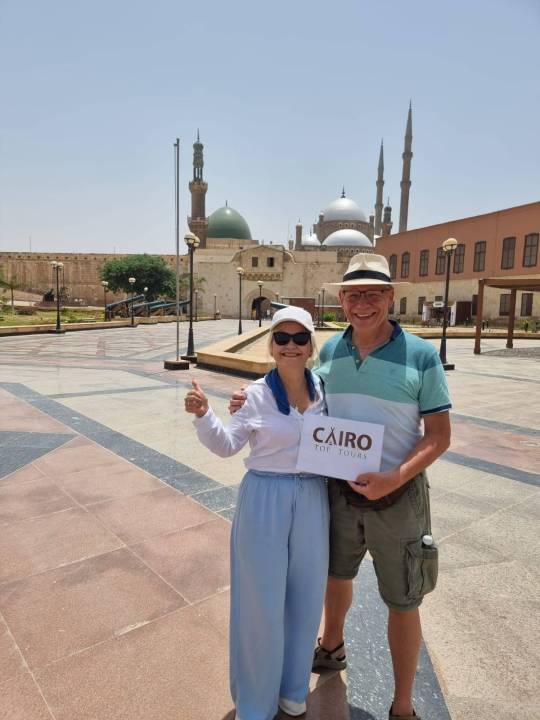
At its board meeting on Tuesday, which was presided over by Minister of Tourism and Antiquities Khaled Al-Anani, the Supreme Council of Antiquities adopted steps to encourage cultural tourism in Egypt.
One of the most significant decisions, according to Mostafa Waziri, Secretary-General of the Supreme Council of Antiquities, was the provision of a 50% discount on entry tickets available to Egyptians at museums and ancient sites which you can visit with our Egypt travel packages.
The Egyptian Museum in Cairo is home to one of the world's most extensive collections of Egyptian antiquities. You can see mummies, jewelry, statues, and other artifacts with our Egypt trips that offer a glimpse into ancient Egyptian civilization.
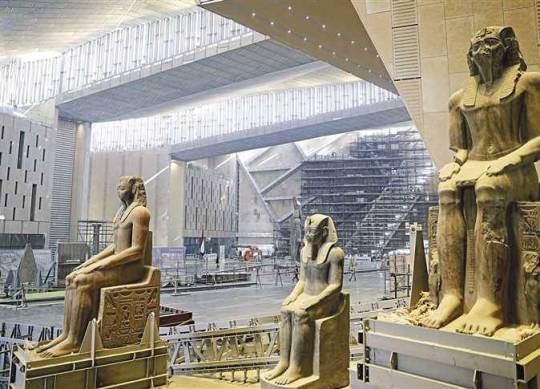
The Grand Egyptian Museum (GEM) is an archaeological museum under construction in Giza, Egypt. Located next to the Giza Pyramids, the Museum will host over 100,000 artifacts that belong to the ancient Egyptian civilization, including the complete Tutankhamun collection and is set to be the largest archaeological museum in the world. Many pieces in its collection will be displayed for the first time you can visit it with our Cairo day tours.
There are many Egypt day tours that you can consider. No matter what your interests are, you're sure to find something to enjoy in Egypt.
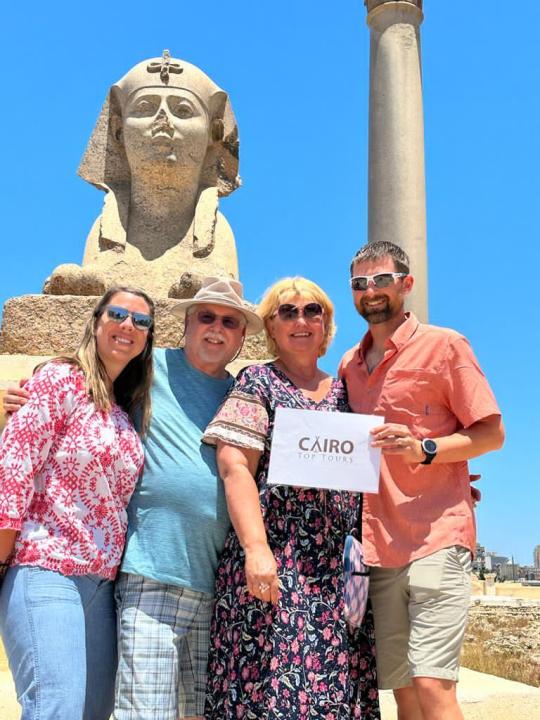
The promotion, he continued, is a part of the "Enjoy your winter in Egypt" campaign of the Ministry of Tourism and Antiquities. It will take place in January and February 2021 you can enjoy the winter with our Egypt Christmas tours. this campaign has been launched in collaboration with the Chamber of Hotel Establishments and the Ministry of Civil Aviation.
ans of the 2021 Men's World Handball Championship in Egypt will also receive a 50% discount on admission to museums and historical places. As long as they have the proper identification, these tickets will be good for the championship between January 13 and January 31, 2021, as well as any locations open for visitation in the governorates of Cairo, Giza, and Alexandria you can visit them with our Egypt classic tours.
also, our Cairo Short Break Tours include visits to the Pyramids of Giza, the Sphinx, the Egyptian Museum, Coptic Cairo, Islamic Cairo, and Alexandria, which is a beautiful city on the Mediterranean coast.

For the fans of the event who were coming to Egypt from overseas, the Ministry of Tourism and Antiquities took part in offering several logistical and tourism programs.
The ministry has also instructed all museums and archaeological sites to keep taking preventative measures, such as keeping social distance between visitors, donning face masks, and limiting tourist groups to no more than 25 people you can try one of our Egypt group tours. This is in addition to respecting the maximum number of visitors allowed inside museums at any given moment.
Waziri said the Board also decided to grant all cafeterias and bazaars in museums and archaeological sites affiliated with the Council a full exemption from paying leasing fees.
4 notes
·
View notes
Text
2 notes
·
View notes
Text
𝐡𝐞𝐚𝐝𝐜𝐚𝐧𝐨𝐧 — 𝐩𝐞𝐫𝐦𝐚𝐧𝐞𝐧𝐭 𝐫𝐞𝐬𝐢𝐝𝐞𝐧𝐜𝐞 .
As Secretary General of the Ministry of Tourism and Antiquities, it is Isis' job to assist in the restoration and preservation of Egyptian artefacts, as well as oversee all of Egypt's archaeological museums, secure the return of stolen or lost artefacts, implement strategies to reduce theft and destruction of artefacts, and boost tourism through the education of Egyptian history and culture.
The wide scope of her duties means that Isis has a demanding schedule that often requires her to travel abroad to meet with various leaders, archaeologists, and professors to ensure that any Egyptian artefacts in their museums are taken care of appropriately, or returned to their rightful place in Egypt if not.
All of that to say, Isis has lived in several different locations since the end of the series. Following Atem's return to the afterlife, Isis was tasked with overseeing the safe transfer and return of some artefacts from the British Museum in London, which required her to live there temporarily for a year.
By the time the events of DSOD pass, Isis is once again transferred; this time to Berlin. Her current job is as the Museum Curator for the Ägyptisches Museum und Papyrussammlung ( Egyptian Museum and Papyrus Collection ) and Berlin currently acts as her permanent residence; though, again, she is often required to travel abroad for events and various tasks related to her occupation.
It is worth noting that, although not fluent by any means, Isis has a conversational understanding of German and can communicate easily enough with her German colleagues with minimal assistance from a translator.
3 notes
·
View notes
Text
0 notes
Text

Archeological discoveries are seen in Luxor, Egypt, in this undated handout photo.
Zahi Hawass Center For Egyptology via Reuters
A mission led by Egypt's former antiquities chief Zahi Hawass unearthed "several areas or neighborhoods" of the 3,000-year-old city after seven months of excavation.
MORE: 'Pharaoh's curse' blamed for Suez Canal blockage, other unfortunate events in Egypt
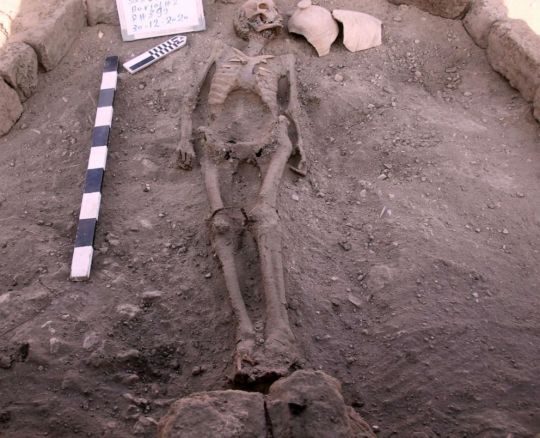
Skeletal human remains sit in the archeological dig site in Luxor, Egypt, in this undated handout photo.
Zahi Hawass Center For Egyptology via Reuters
The city, which Hawass also called "The Rise of Aten," dates back to the era of 18th-dynasty king Amenhotep III, who ruled Egypt from 1391 till 1353 B.C.
"The excavation started in September 2020 and within weeks, to the team's great surprise, formations of mud bricks began to appear in all directions," Egypt's antiquities ministry said in a statement.
"What they unearthed was the site of a large city in a good condition of preservation, with almost complete walls, and with rooms filled with tools of daily life."
The southern part of the city includes a bakery, ovens and storage pottery while the northern part, most of which remain under the sands, comprises administrative and residential districts, the ministry added.
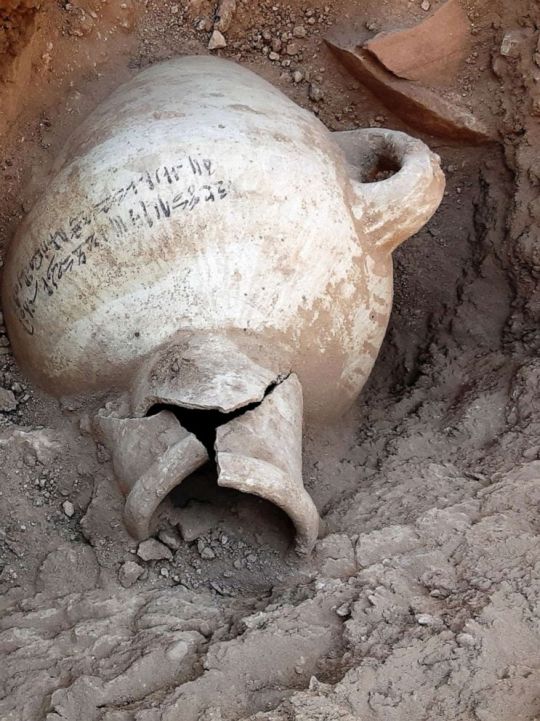
Archeological discoveries sit among the dig in Luxor, Egypt, in this undated handout photo.
Zahi Hawass Center For Egyptology via Reuters
"The city's streets are flanked by houses," with some walls up to 3 meter high, Hawass also said.
Hawass said the city was still active during Amenhotep III's co-regency with his son, Akhenaten, but that the latter eventually abandoned it when he took the throne. Akhenaten then founded Amarna, a new capital in the modern-day province of Minya, some 250 km south of Cairo and 400 km north of Luxor.
MORE: Egypt unlocks more secrets in Saqqara with discovery of temple, sarcophagi
Betsy Brian, professor of egyptology at Johns Hopkins University in Baltimore, said the finding's importance is only second to the earth-shattering discovery of King Tut's tomb.

A new archaeological discovery stands in Luxor, Egypt, in this undated handout photo.
Zahi Hawass Center For Egyptology via Reuters
Egypt has made a string of major discoveries over the past few years as it hopes to revive its vital tourism industry, which was badly hit by two uprisings and the COVID-19 pandemic.
The country held a glitzy parade to move 22 mummies to a newly inaugurated museum in Cairo on Saturday and is preparing to open the Grand Egyptian Museum near the Giza Pyramids later this year.
Egypt says GEM will be the biggest museum in the world dedicated to a single civilization.
1 note
·
View note
Text
Welcome to Egypt, the land of the pyramids and the Red Sea!
If you are looking for an exceptional tourist destination that combines history and natural beauty, Egypt is the perfect choice.
travel
#tourism #Cairo #Egypt #Pyramids #how_in_Egypt #Tour #vacation #trip #day #cruise #Nile #Luxor #Aswan #cruise
@cairotoptours-blog
cairotoptours
1 note
·
View note
Text
New “treasures and secrets” have been revealed at the site of a sunken temple off Egypt’s Mediterranean coast, the European Institute for Underwater Archaeology (IEASM) announced in a news release Tuesday.
An underwater archaeological team, led by French marine archaeologist Franck Goddio, has made further discoveries at the site of a temple to god Amun in the ancient port city of Thonis-Heracleion in the Bay of Aboukir, the institute said.
The team investigated the city’s south canal, where huge blocks of stone from the ancient temple collapsed “during a cataclysmic event dated to the mid-second century BC,” the institute said.
The temple to god Amun was where pharaohs came “to receive the titles of their power as universal kings from the supreme god of the ancient Egyptian pantheon,” it said.
“Precious objects belonging to the temple treasury have been unearthed, such as silver ritual instruments, gold jewelry and fragile alabaster containers for perfumes or unguents,” IEASM said.
“They bear witness to the wealth of this sanctuary and the piety of the former inhabitants of the port city.”
The archaeological excavations, conducted jointly by Goddio’s team and the Department of Underwater Archaeology of the Ministry of Tourism and Antiquities of Egypt, revealed underground structures “supported by very well-preserved wooden posts and beams dating from the 5th century BC,” the institute said.
“It is extremely moving to discover such delicate objects, which survived intact despite the violence and magnitude of the cataclysm,” said Goddio, who is president of IEASM and director of excavations.
The discoveries were made possible thanks to the development and use of new geophysical prospecting technologies that can detect cavities and objects “buried under layers of clay several meters thick,” the institute said.
Relics from Greek presence, too
East of the Amun temple, a Greek sanctuary devoted to Aphrodite was discovered containing bronze and ceramic objects.
“This illustrates that Greeks who were allowed to trade and settle in the city during the time of the Pharaohs of the Saïte dynasty (664 - 525 BC) had their sanctuaries to their own gods,” the institute said.
The discoveries of Greek weapons also reveal the presence of Greek mercenaries in the area, IEASM said. “They were defending the access to the Kingdom at the mouth of the Canopic Branch of the Nile. This branch was the largest and the best navigable one in antiquity.”
The remains of Thonis-Heracleion are now located under the sea, 7 kilometers (4.3 miles) from the present coast of Egypt, IEASM said. The city was for centuries Egypt’s largest port on the Mediterranean before the founding of Alexandria by Alexander the Great in 331 BC.
“Rising sea levels and earthquakes followed by tidal waves triggering land liquefaction events, caused a 110 square kilometer portion of the Nile delta to totally disappear under the sea, taking with it the city of Thonis-Heracleion,” the institute said.
The city was discovered by the IEASM in 2000.
1 note
·
View note
Text

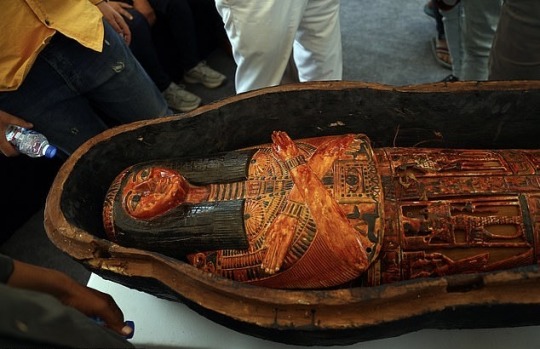

3,400-Year-Old Ancient Egyptian Cemetery Found With Colorful Coffins
Archaeologists have uncovered an Ancient Egyptian cemetery dated to more than 3,000 years ago containing the colorful coffin of a high priest's daughter and preserved mummies, among hundreds of other finds.
Researchers unearthed the cemetery at the Tuna el-Gebel necropolis, located almost 170 miles south of Cairo in Minya Governate, Egypt's Ministry of Tourism and Antiquities announced in a statement on Sunday.
The cemetery, which dates back to the New Kingdom (16th-11th centuries B.C.) of ancient Egypt, was used as a burial ground for senior officials and priests during the period, according to archaeologists.
The cemetery was uncovered during excavations that began last August in the Al-Ghuraifa area of Tuna El-Gebel and features "many tombs" that have been carved into rock.
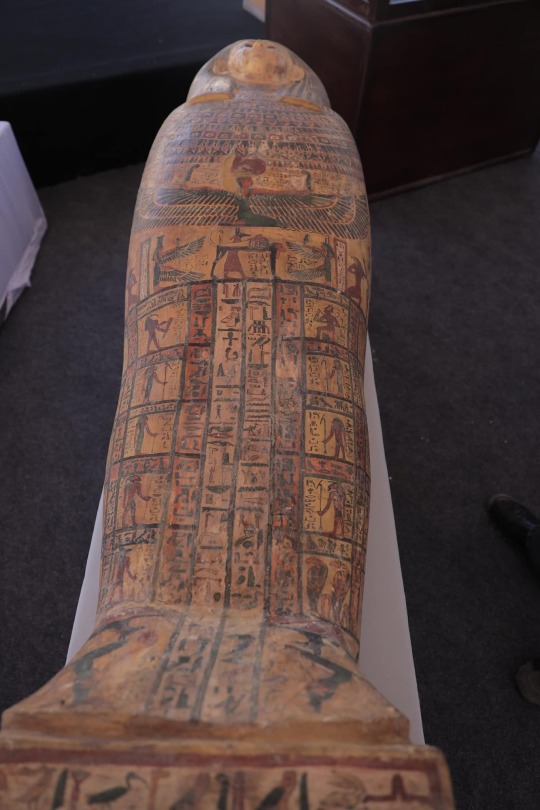
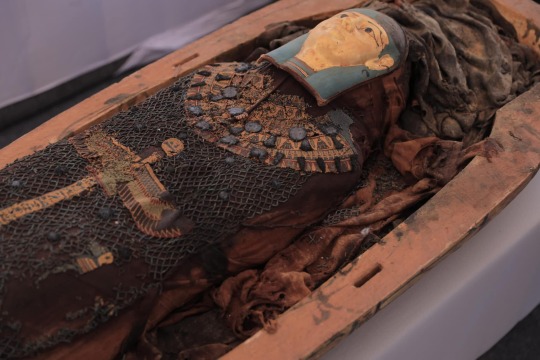
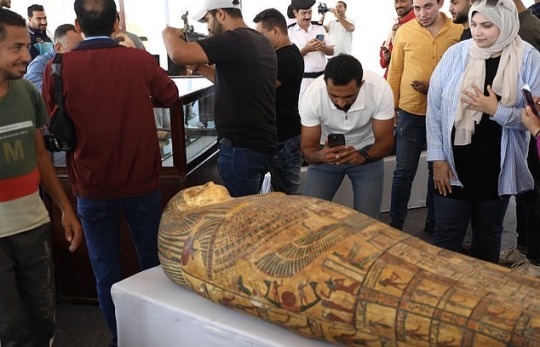
Researchers have also made hundreds of archaeological finds at the site, including stone and wooden coffins—some of which contained mummies—amulets, ornaments and funerary figurines.
One of the most notable finds at the cemetery is a colorful, engraved coffin belonging to the daughter of a high priest of the ancient Egyptian god Djehuti, often referred to as Thoth.
This deity, commonly depicted as a man with the head of an ibis or baboon, was a key figure in ancient Egyptian mythology and played several prominent roles. For example, Thoth was credited with the invention of writing and is also believed to have served as a representative of the sun god Ra.
Next to the coffin of the high priest's daughter, archaeologists found two wooden boxes containing her canopic jars, as well as a complete set of "ushabti" statues.


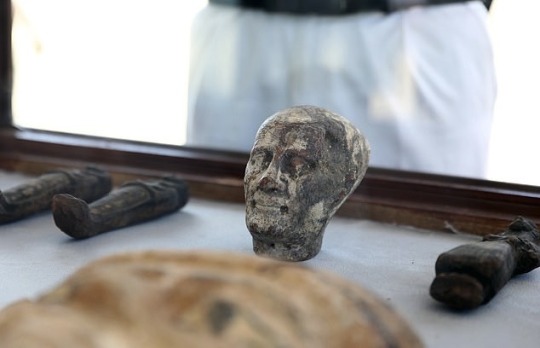
Canopic jars were vessels used by the ancient Egyptians to store the organs removed from the body in the process of mummification—the lungs, liver, intestines and stomach—in order to preserve them for the afterlife.
Ushabti statues, meanwhile, were figurines used in ancient Egyptian funerary practices that were placed in tombs in the belief that they would act as servants for the deceased in the afterlife.
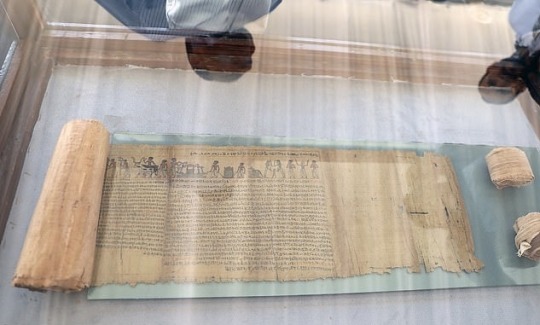

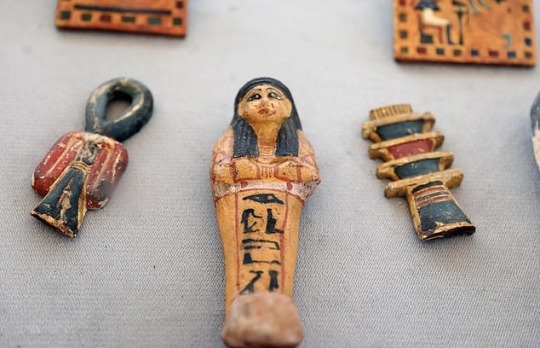

Archaeologists also made another particularly fascinating find at the New Kingdom cemetery: a complete and well-preserved papyrus scroll measuring approximately 42-49 feet in length that features information related to the Book of the Dead.
The Book of the Dead is a collection of ancient Egyptian funerary texts consisting of spells or magic formulas that were placed in tombs. These texts were thought to protect and aid the deceased in the afterlife. They were generally written on papyrus, a material similar to thick paper that was used as a writing surface in ancient times.
Mostafa Waziri, secretary general of the Supreme Council of Antiquities, said in the statement that the discovery of the cemetery is an "important" find.
By Aristos Georgiou.

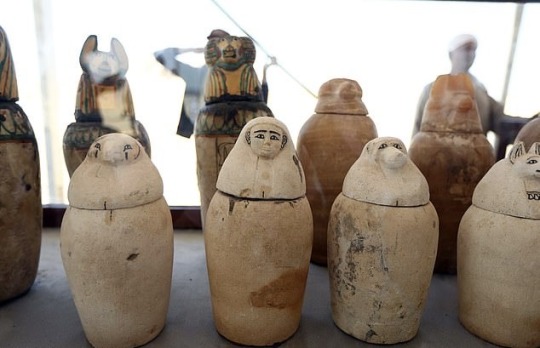
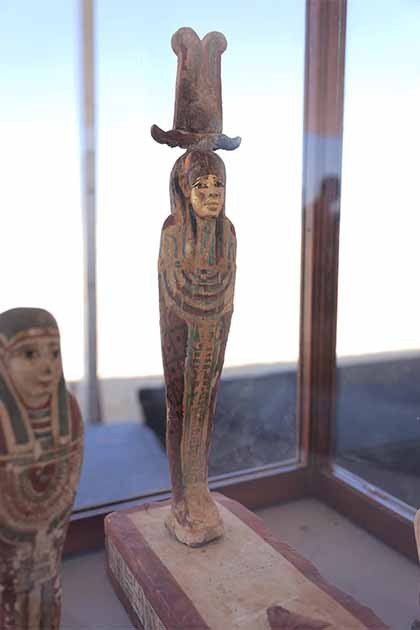

#3400-Year-Old Ancient Egyptian Cemetery Found With Colorful Coffins#Tuna el-Gebel necropolis#Minya Governate#ancient grave#ancient tomb#ancient cemetery#ancient necropolis#book of the dead#canopic jars#Egyptian god Djehuti#high priest#high priestess#ancient artifacts#archeology#archeolgst#history#history news#ancient history#ancient culture#ancient civilizations#ancient egypt#egyptian history#egyptian gods#egyptian mythology#egyptian art
182 notes
·
View notes